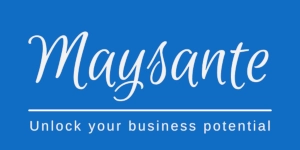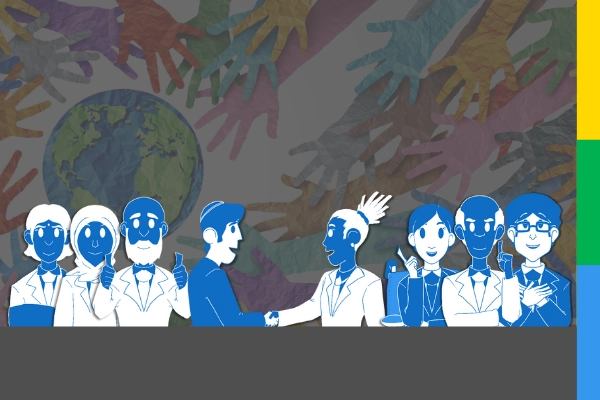Diversity and Inclusion are two words that are often go hand in hand. Thus, suggests that you can’t achieve one without the other.
Diversity is the unique characteristic that makes us all individuals and different. It is what makes us special. Aspects of diversity are protected by law. These include race, age, disability, sex and sexual orientation. In addition, religion or belief, marriage and civil partnerships are also included. The other aspects are defined by experiences and opportunities. Experiences and opportunities such as socioeconomic backgrounds, upbringing and education.
A diverse workplace has employees from a wide range of backgrounds, with distinct characteristics. Everyone brings something unique to the table. Collectively, they enrich the culture and the working environment. As a result, they bring different perspectives to the organisation.
Inclusion is about creating an environment where everyone is welcome, respected and valued. Everyone can be themselves in an inclusive workplace. Thus, they do not have to pretend to be someone else to fit in. Inclusivity is not a legal requirement, but it is the right and smart thing to do. You need to make a conscious choice to create an inclusive environment.
How can you create a diverse and inclusive workplace?
You can create a diverse workforce by removing biases from your recruitment process. Design your selection process to help you choose the right candidate for the role. Select candidates based on what they can bring to your organisation, such as their skills, experiences, capabilities, and qualifications. Think about how they can enrich your team. Do not recruit people purely because of their appearance or obvious characteristics.
You may be familiar with the term tokenism. This is when one person of a minority background is accepted into a majority group. An example is when one black person is hired into an all-white organisation. Another example is when one woman is appointed to the board. Organisations who go down this route often do so to tick off the checklist. They are simply doing a grand gesture. Not surprisingly, such organisations are unlikely to be inclusive.
A truly diverse workplace has people from diverse backgrounds. Therefore, it will have a good representation of all sexes in the organisation and the boardroom. People will come from different backgrounds, races and ethnicity. They will also have different religions or beliefs, sexual orientation, disability, education, culture and socioeconomic backgrounds.
Creating an inclusive culture means considering and being sensitive to the differences in people. This includes their unique characteristics. People can feel either included or alienated because of your choice of language in meetings. Your choice of venues for meetings, activities for team building, etc., may also contribute to this. The perceptions of what behaviours are acceptable can force someone to assume a different persona at work. This can have an impact on their productivity and wellbeing.

Equal Opportunities
Once people are in an organisation, an inclusive organisation will have measures in place to ensure that they have equal opportunities. You will do everything possible to promote equity amongst the workforce. You will pay people doing the same or similar jobs the same or similar salaries. For example, you will pay both a male and female engineer the same wage. Another example is project managers with the same level of experience, skills and knowledge will have the same salary. Also, employees holding the same qualifications from different institutions, doing the same job will earn the same amount. When it comes to promotion, you will offer promotion based on merits and not marginalise any minority groups.
Key benefits of diversity and inclusion
- Increase in profitability and revenues (as reported in McKinsey’s Diversity report).
- Increase in innovation, productivity and engagement.
- Enhance brand image and enrich culture.
- Create better working environments.
- Attract and retain top talent.
Actions you can take to develop diversity and inclusion
Diversity
Educate your workforce and stakeholders about diversity, inclusion and biases.
- Recruit a diverse workforce.
- Give careful consideration to planned work-related activities to make them inclusive.
- Create an environment where open discussions take place about differences.
- Celebrate your differences.
- Improve mental health and wellbeing by encouraging people to be themselves at work.
Inclusion
- Develop and embed inclusive practices.
- Ensure your company values and culture respect and embrace everyone.
- Create equitable policies, processes and systems that offer equal opportunities to all.
- Increase and widen your talent pool to attract diverse people.
Better communication with language choices makes everyone feel welcome. Educate and provide resources, both internal and external to increase awareness.
Leadership
As a leader, you have a responsibility to ensure that diversity and inclusion remain high on your agenda. It must be a priority for the board and leadership team. You must therefore hold people accountable. Appoint diversity and inclusion ambassadors within your organisation. Give them the necessary time and resources to ensure they are effective. Thus, maintaining diversity and inclusion is high on your agenda. You must lead by example. Engage in activities promoting diversity and inclusion. Let your actions speak for you.
Understanding the differences between diversity and inclusion is important. It will help you develop an appropriate strategy in your organisation. As a result, you will be able to address and promote diversity and inclusion. It therefore will help you make informed decisions about:
- recruitment and selection;
- talent development;
- promotions;
- pay increase and awards;
- performance management; and
- employee engagement programmes

